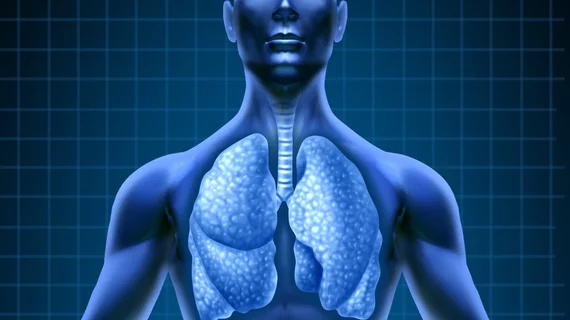Deep learning applied to chest radiographs efficiently identifies early interstitial lung disease
While the research and benefits of deep learning have been growing at a rapid pace, a recent study further underscores these findings in radiology—specifically its impressive accuracy for detecting reticular opacity in chest radiographs among patients with interstitial lung disease (ILD).
A total of 197 patients (130 men, 67 women) were included in the research, which spanned from January 2017 to December 2018. All patients had surgically confirmed ILD and underwent preoperative chest X-ray and chest CT within a 30-day time frame. In addition, a total of 197 control patients with normal chest X-rays were randomly selected for comparison. Six readers (three board-certified radiologists, three radiology residents) evaluated radiographs for reticular opacity with and without commercially available deep learning.
Though fine results were recorded for the readers alone, they were nearly perfect for rads using deep learning. For readers alone, sensitivity, specificity and accuracy for reticular opacity were 72.3%, 92.3% and 84.8%, respectively, versus 93.8%, 97.3% and 95.6% for readers with deep learning. And on its own, deep learning outperformed readers, but did increase concurrence among them.
“Our results could allow expanded use of chest radiography in ILD clinics. Given the sensitivity of DLA for reticular opacity in mild to moderate disease, the technique could be applied for screening patients with suspected ILD, an area for which chest radiography has historically not performed well,” corresponding author, Sang Min Lee, MD at the Department of Radiology and Research Institute of Radiology with University of Ulsan College of Medicine, Asan Medical Center in Seoul, and co-authors wrote.
Conclusively, the DLA proved to be advantageous, even contributing to enhanced radiologist performance and increased interobserver agreement. The future of detecting reticular opacity in early ILD will benefit from the use of DLA, the study suggests.
You can read the detailed study published in the American Journal of Roentgenology here.

